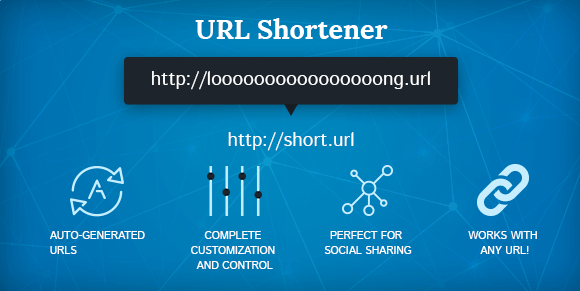Understanding Link Shorteners: A Guide to Efficiency and Security
URL Shorteners: In today’s digital age, where sharing information swiftly is crucial, link shorteners have emerged as indispensable tools. These services condense long, unwieldy URLs into shorter, more manageable forms, facilitating easier sharing across various platforms. While their utility is apparent, understanding their mechanics, benefits, and potential drawbacks is essential for both casual users and businesses alike.
What Are Link Shorteners?
Link shorteners are online tools designed to convert lengthy URLs into shorter versions that are easier to share and remember. They work by assigning a unique identifier to the original URL, redirecting users through the shortened link to the intended destination. This process simplifies the sharing of URLs on platforms with character limits, such as Twitter, and enhances the aesthetic appeal of posts by reducing clutter.
How Do Link Shorteners Work?
The operation of link shorteners revolves around a straightforward process:
URL Input: Users input the long URL they wish to shorten into the link shortener’s interface.
Shortening Algorithm: The service generates a shorter URL by using an algorithm that creates a unique identifier for the original link.
Redirection: When users click on the shortened link, they are redirected through the service’s servers to the original URL, ensuring seamless access.
Benefits of Using Link Shorteners
Link shorteners offer several advantages that cater to both individual users and businesses:
Space Efficiency: Shortened URLs take up less space, allowing for concise sharing in social media posts, emails, and text messages.
Improved Aesthetics: They enhance the appearance of content by reducing visual clutter associated with lengthy URLs.
Tracking Capabilities: Many link shorteners provide analytics that tracks click-through rates and user engagement, offering valuable insights for marketing campaigns.
Customization Options: URL Shorteners: Some services allow users to customize shortened links with branded domains, reinforcing brand identity and credibility.
Ease of Sharing: Simplifies sharing across platforms with character limitations, promoting better user experience and engagement.
Types of Link Shorteners
Link shorteners vary in functionality and features, catering to diverse user needs:
Public Shorteners: Offered by platforms like Bitly, TinyURL, and Goo. Gl, these are accessible to anyone and often include basic analytics.
Private Shorteners: Managed internally by businesses or organizations for exclusive use, ensuring control over data and link management.
Branded Shorteners: Customizable with branded domains (e.g., links.yourcompany.com), reinforcing brand identity and trust.
Security Considerations
URL Shorteners: While link shorteners provide convenience, they also pose security risks that users and businesses should be aware of:
Phishing Threats: Shortened links can obscure the destination URL, potentially leading users to malicious websites if not vetted properly.
Link Rot: If the shortening service shuts down or changes policies, previously shortened links may become obsolete or redirect improperly.
Data Privacy: Some link shorteners track user data for analytics, raising concerns about privacy and data security.
Best Practices for Using Link Shorteners
To maximize the benefits of link shorteners while mitigating risks, consider these best practices:
Vet Sources: Verify the credibility of shortened links before clicking, especially in unsolicited messages or emails.
Use Reputable Services: Opt for well-established link shorteners with robust security measures and privacy policies.
Customization: Leverage branded shorteners for enhanced brand visibility and trustworthiness.
Regular Monitoring: Monitor analytics to track performance and ensure links remain active and relevant.
Educate Users: Educate team members and users about the risks associated with clicking on unfamiliar shortened links.
The Future of Link Shorteners
As digital communication evolves, link shorteners continue to adapt to meet changing user needs and technological advancements:
Integration with AI: Enhanced analytics and predictive algorithms could offer personalized link-shortening suggestions.
Blockchain Integration: Utilizing blockchain technology to enhance security and transparency in link management.
Enhanced Privacy Measures: Stricter data privacy regulations may prompt link shorteners to adopt stronger security protocols.
Conclusion
URL Shorteners: Link shorteners play a pivotal role in modern digital communication, offering convenience, efficiency, and tracking capabilities. While they simplify sharing and enhance user experience, vigilance and best practices are crucial to mitigate potential risks. By understanding how to link shorteners work, their benefits, security considerations, and future trends, users and businesses can leverage these tools effectively in their online endeavors.
FAQs
Q1. What is a link shortener?
A link shortener is an online tool that converts long URLs into shorter, more manageable links, making them easier to share and remember.
Q2. Why are link shorteners useful?
They save space in text-limited platforms like Twitter, improve visual aesthetics by reducing clutter, and provide analytics on link performance.
Q3. What are the potential risks of using link shorteners?
Risks include exposure to phishing attacks if links aren’t vetted, potential link rot if services shut down, and concerns over data privacy with some services tracking user interactions.
Q4. How can businesses benefit from using branded link shorteners?
Branded link shorteners help businesses reinforce brand identity, build trust with customers by using recognizable URLs, and gain insights into customer behavior through analytics.
Q5. What should users consider before clicking on a shortened link?
Users should verify the source of the link, especially in unsolicited messages, ensure the link’s credibility, and be cautious of potential phishing attempts.







Earn money